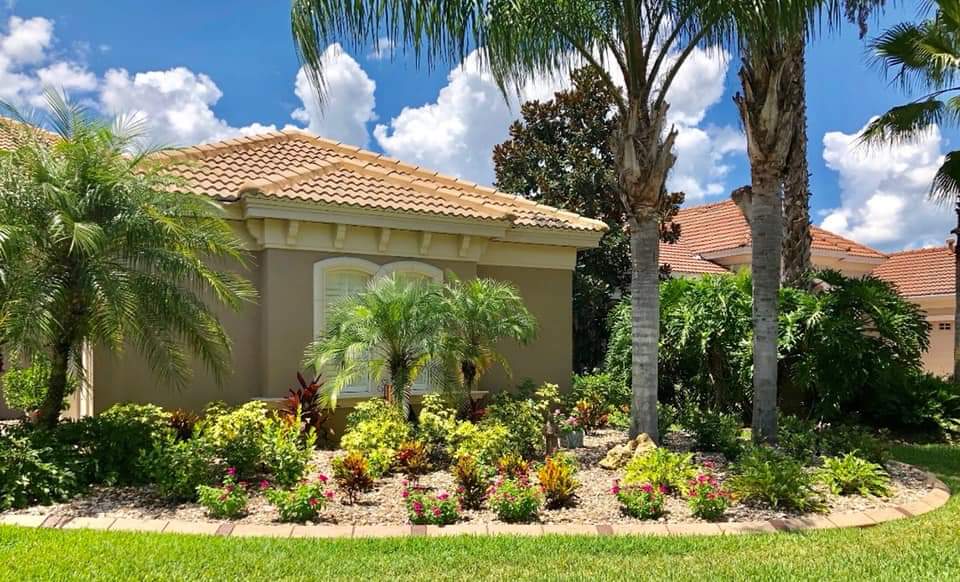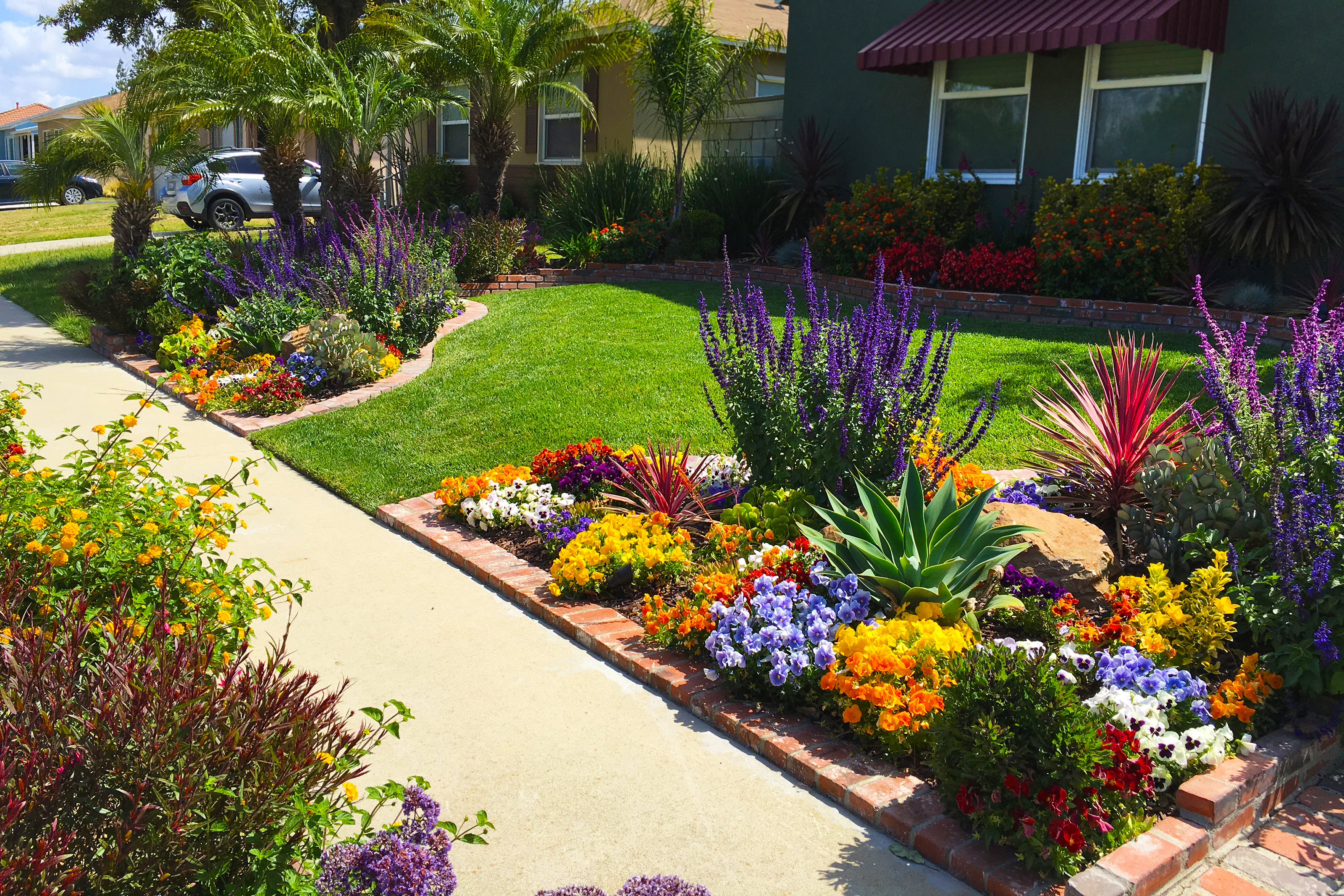Leading Tips for Enhancing Your Yard with Palm Desert Landscaping Ideas
Leading Tips for Enhancing Your Yard with Palm Desert Landscaping Ideas
Blog Article
A Comprehensive Overview to Creating and Implementing Effective Landscape Design Solutions
The art and science of landscaping expand past mere looks; they entail a thoughtful integration of design concepts, ecological stewardship, and practical implementation. An extensive overview to efficient landscaping options begins with a comprehensive understanding of your outside space, highlighting the significance of percentage, unity, and equilibrium. As we explore sustainable strategies and the selection of proper plants, the ramifications for biodiversity and neighborhood wellness become progressively evident. What methods can one use to make sure these landscapes not just thrive yet also flourish in harmony with their surroundings?

Comprehending Landscape Layout Concepts
One might wonder what foundational components add to efficient landscape layout. At its core, successful landscape layout depends upon numerous key concepts that guide the plan and option of aspects within an area. These concepts consist of unity, balance, proportion, and rhythm, each serving to develop a harmonious outdoor setting.
Unity describes the natural partnership amongst different parts, making sure that they collaborate cosmetically and functionally. Equilibrium can be attained via symmetrical or unbalanced plans, allowing the landscape to feel secure and inviting. Percentage entails comprehending the range of components in connection with each various other and the surrounding setting, promoting visual consistency and comfort.

Assessing Your Outdoor Area
Before applying the principles of landscape style, a thorough assessment of your outside space is vital. This first assessment helps specify the extent of your landscape design task and makes certain that your style aligns with the special qualities of your residential property. Begin by assessing the measurements of your room, taking accurate dimensions to comprehend the offered location for different elements such as paths, gardens, and outdoor patios.
Next, observe the existing features of your landscape, consisting of topography, soil high quality, and drain patterns. These factors dramatically influence plant selection and positioning. Furthermore, analyze the sunshine exposure throughout various locations throughout the day, as this will influence the sorts of plants that thrive in your yard.
Think about the microclimates produced by frameworks, trees, and other obstacles, as they can influence temperature level and dampness levels. Lastly, take note of any kind of existing plants or hardscape elements that you desire to eliminate or keep. This detailed examination lays the groundwork for a knowledgeable and effective landscape design solution, guaranteeing that your design is not only cosmetically pleasing yet additionally practical and sustainable for several years to find.
Sustainable Landscaping Methods
Incorporating sustainable landscaping methods is essential for producing an environmentally responsible exterior room. These practices not just advertise ecological equilibrium but additionally enhance the aesthetic and practical value of a landscape. One fundamental technique is the utilization of native plants, which need much less water and upkeep while sustaining regional wild animals. Executing efficient watering systems, such as drip watering, lessens water waste and guarantees that plants receive ample moisture.

One more efficient method is the critical positioning of shrubs and trees to give all-natural windbreaks and shade, thus decreasing energy prices (Palm Desert Landscaping). Rain gardens can be integrated right into the landscape style to take care of stormwater overflow efficiently, Website filtering system pollutants before they go into waterways
Selecting the Right Plants
Choosing the right plants for your landscape is important to attaining both visual charm and environmental consistency. The procedure begins with an understanding of your local environment, soil problems, and the details microenvironments within your landscape. Examining variables such as sunlight direct exposure, dampness levels, and existing vegetations will certainly help you select plants that prosper in your unique setting.
Think about integrating indigenous plants, as they are well-adapted to neighborhood problems, require much less maintenance, and assistance regional wild animals. Additionally, picking a diverse range of species can enhance biodiversity while reducing the threat of illness and insect break outs. It is vital to assess the growth habits, flowering durations, and seasonal colors of potential plants to develop a dynamic and cohesive landscape.
Furthermore, consider the meant usage of the space; as an example, if the area will experience high foot web traffic, choose resilient ground covers. By thoughtfully picking plants that line up with both your environmental demands and aesthetic objectives, you can create a sustainable landscape that not only boosts your home however also adds favorably to the surrounding ecological community.

Implementation and Maintenance Approaches
As soon as the ideal plants have been selected click for source for your landscape, the focus shifts to effective execution and recurring upkeep methods. Effective setup starts with proper website preparation, which consists of dirt testing to establish nutrient levels and pH, complied with by amending the dirt as needed. Thoroughly organize plants according to their development behaviors and light demands, guaranteeing adequate spacing to advertise healthy growth.
Irrigation is a vital element of application. Establish a watering timetable that considers the particular demands of each plant species, changing for seasonal adjustments. Making use of drip irrigation systems can boost water performance and reduce overflow.
Upkeep strategies have to be executed to guarantee the durability and vitality of your landscape. Routine tasks consist of weeding, mulching, and pruning to control growth and avoid condition. Fertilizing ought to be performed based on soil tests, offering the required nutrients without over-fertilizing.
Monitoring for parasites and illness is necessary; early detection can stop significant damage. Last but not least, seasonal adjustments to maintenance regimens, such as preparing and winterizing perennials for springtime growth, will make certain that your landscape continues to be healthy and balanced and visually attractive year-round.
Conclusion
Successful implementation and continuous upkeep better make sure the longevity and vitality of landscapes. By incorporating these aspects, landscapes can be changed into beautiful, practical settings that have a peek here promote biodiversity and contribute favorably to community well-being.
One might wonder what foundational aspects add to reliable landscape design. At its core, successful landscape style hinges on numerous essential principles that guide the arrangement and choice of elements within an area.Picking the right plants for your landscape is important to achieving both aesthetic charm and ecological consistency. It is important to evaluate the development behaviors, flowering durations, and seasonal colors of potential plants to create a natural and dynamic landscape.
As soon as the best plants have been picked for your landscape, the emphasis shifts to efficient application and continuous upkeep techniques.
Report this page